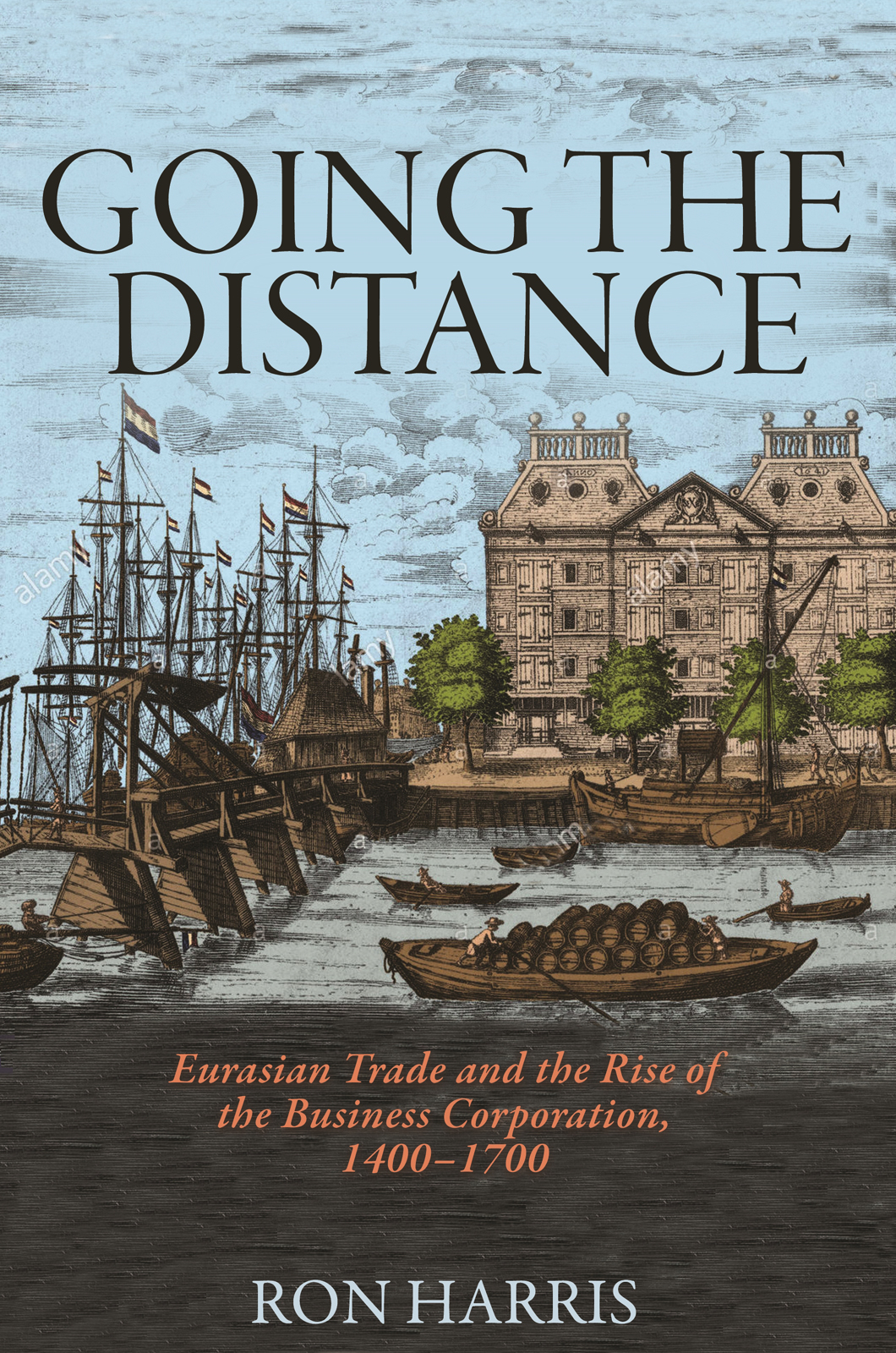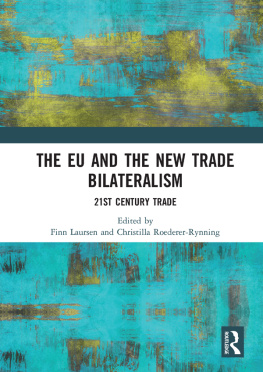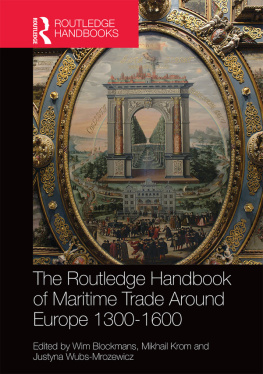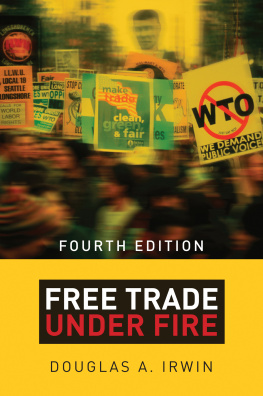Contents
Guide
Page List

GOING THE DISTANCE
THE PRINCETON ECONOMIC HISTORY OF THE WESTERN WORLD
Joel Mokyr, Series Editor
RECENT TITLES:
Trade in the Ancient Mediterranean: Private Order and Public Institutions
by Taco Terpstra
The European Guilds: An Economic Analysis
by Sheilagh Ogilvie
Dark Matter Credit: The Development of Peer-to-Peer
Lending and Banking in France
by Philip T. Hoffman, Gilles Postel-Vinay, and Jean-Laurent Rosenthal
The Winding Road to the Welfare State:
Economic Insecurity and Social Welfare Policy in Britain
by George R. Boyer
Uneven Centuries: Economic Development of Turkey since 1820
by evket Pamuk
The Mystery of the Kibbutz: Egalitarian Principles in a Capitalist World
by Ran Abramitzky
The Great Leveler: Violence and the History of Inequality
from the Stone Age to the Twenty-First Century
by Walter Scheidel
The Rise and Fall of American Growth:
The U.S. Standard of Living since the Civil War
by Robert J. Gordon
Brazil in Transition: Beliefs, Leadership, and Institutional Change
by Lee J. Alston, Marcus Andr Melo, Bernardo Mueller, and Carlos Pereira
Unequal Gains: American Growth and Inequality since 1700
by Peter H. Lindert and Jeffrey G. Williamson
GOING THE DISTANCE
Eurasian Trade and the Rise of the Business Corporation, 14001700
RON HARRIS
PRINCETON UNIVERSITY PRESS
PRINCETON AND OXFORD
Copyright 2020 by Princeton University Press
Published by Princeton University Press
41 William Street, Princeton, New Jersey 08540
6 Oxford Street, Woodstock, Oxfordshire OX20 1TR
press.princeton.edu
All Rights Reserved
Library of Congress Cataloging-in-Publication Data
Names: Harris, Ron, 1960author.
Title: Going the distance : Eurasian trade and the rise of the business corporation,
14001700/Ron Harris.
Description: Princeton : Princeton University Press, 2019. | Series: Princeton economic
history of the Western world | Includes bibliographical references and index.
Identifiers: LCCN 2019016740 | ISBN 9780691150772 (hardcover) |
ISBN 9780691185804 (e-book)
Version 1.0
Subjects: LCSH: CorporationsEuropeHistory. | EurasiaCommerceHistory. |
EurasiaEconomic conditions.
Classification: LCC HD2844 .H37 2019 | DDC 382.095dc23
LC record available at https://lccn.loc.gov/2019016740
British Library Cataloging-in-Publication Data is available
Editorial: Joe Jackson and Jacqueline Delaney
Production Editorial: Kathleen Cioffi
Text and Jacket Design: Lorraine Doneke
Jacket image: Science History Images / Alamy
For Hadas
CONTENTS
~ ~ ~
ix
xiii
PART I.
The Context: Geography, Historiography, Theory
2 Theoretical Frameworks for Analyzing the Development of
Institutions in Interaction with Their Environment 48
PART II.
Organizational Building Blocks
PART III.
Long-Distance Trade Enterprises on the Eve of the Organizational Revolution
PART IV.
The Corporation Transformed: The Era of Impersonal Cooperation
ACKNOWLEDGMENTS
~ ~ ~
This book was in the making for more than a decade. During that time, I delved into the history of civilizations, periods, and institutions that were new to me. I needed guiding through the historical literature, direction to sources, explanations about the details of institutions, and suggestions for theoretical frameworks. Joel Mokyr is the scholar to whom I owe the most. He is an ideal series editor, encouraging, motivating, and insisting on timely progress. He warned me of the consequences of becoming a dean, but once I assumed that office (which I held for five long yet rewarding years) he supported me and the book through the consequent protraction of the project. He was critical in the most insightful and productive way possible. He also wisely selected three anonymous referees who examined the manuscript from three distinct disciplinary and regional perspectives. I am grateful to these reviewers for their invaluable comments and suggestions. Over the years, I also benefited from the advice and assistance of numerous scholars with a wide range of expertise, ranging from Roman Egypt to Yuan China and from Armenian merchants in Amsterdam to Dutch merchants in Indonesia. Some of them introduced me to wholly new fields, while others provided a single important lead. Some provided comments in presentations of the various chapters at different stages of their writing. With others I had long exchanges and conversations. I am grateful to Gregory Ablavsky, Ran Abramitzky, Benito Arruada, Sebouh Aslanian, Michal Biran, Ritu Birla, Peter Borschberg, Katherine Burke, Murat Cizaka, Mark Cohen, Robert Cooter, Albrecht Cordes, Giuseppe Dari- Mattiacci, Kent Deng, Rowan Dorin, Jorge Flores, David Faure, Lawrence Friedman, Mordechai Akiva Friedman, Oscar Gelderblom, Joshua Getzler, Stefania Gialdroni, Robert Gibbons, Francois Gipouloux, Jessica Goldberg, Yadira Gonzlez de Lara, Avner Greif, Timothy Guinnane, Li Guo, Merav Haklai-Rotenberg, Valerie Hansen, Henry Hansmann, Pierre-Cyrille Hautcoeur, Richard Helmholz, Santhi Hejeebu, Phil Hoffman, Ella Jager, Matthijs de Jongh, Hassan Khalilieh, Amalia Kesler, Dan Klerman, Timur Kuran, Naomi Lamoreaux, Guy Laurie, David Lieberman, Ghislaine Lydon, Pius Malekandathil, Neil Nathanel, Patrick OBrien, Mihoko Oka, evket Pamuk, Om Prakash, David Powers, Dominic Rathbone, Himanshu Prabha Ray, Jean- Laurent Rosenthal, Youval Rotman, Tirthankar Roy, Billy K. L. So, Harry Scheiber, Peter Temin, Chris Tomlins, Francesca Trivellato, Sidney G. Tarrow, Dean Williamson, Gavin Wright, R. Bin Wong, Wen-hsin Yeh, Uri Yiftach, and Madeleine Zelin. Unfortunately, and fortunately, the list is too long to detail their individual contributions.
I was privileged to be part of the exceptional group of legal historians at Tel Aviv Universitys Faculty of Law. This collective, which is one of the largest, strongest, and most diverse groups of legal historians anywhere, supported me in so many ways. One could not hope for a more engaging and open- minded intellectual community of scholars than Leora Bilsky, Jos Brunner, Arye Edrei, Roy Kreitner, Shai Lavi, Assaf Likhovski, Doreen Lustig, Yifat Monnickendam, Lena Salaymeh, David Schorr, Elimelech Westreich, and Shay Wozner. I was fortunate enough to spend a year completing final revisions as a fellow at the Center for Advanced Study in the Behavioral Sciences (CASBS) in Stanford. My colleagues at Tel Aviv and cofellows in Stanford inspired me in many ways and broadened my horizons. I presented chapters of the book and the book framework as a whole in seminars, workshops, and conferences at various universities in Europe, Asia, and North America. The list of these is too long included here. Ill settle for mentioning only two: the six annual Eurasia Trajecto research network conferences, organized by Francois Gipouloux, and the day-long symposium on the book organized at Caltech by Jean- Laurent Rosenthal.
I benefited from the work of able and devoted research assistants on texts in languages I have not mastered and in archives and libraries I did not visit personally: Oded Abt, Roy Binkowicz, Rachele Hassan, Rachel Klagsbrun, Githa Markens, Marcelo Melnik, Einat Toledano, and Kriti Sharma. In addition, over the years I employed young and talented Tel Aviv Law School students as research assistants on this project: Shahar Avraham, Jonathan Bensoussan, Meshi Ben Naftali, Tom Binkowicz, Rotem Ernreich, Olga Frieshman, Mor Greif, Nathanel Habany, Maya Hay, Amit Itai, Avshlom Kasher, Hilit Orny, Oz Pinhas, Yoav Schori, Maayan Shelhav, Ido Tzang, Andrey Yagupolsky, Eyal Yaacoby, and Noga Zamir. In the early stages of the project, Gila Haimovic was an excellent editor, and in the final stages Amanda Dale conducted very high quality developmental and copyediting of the manuscript. The Israel Science Foundation (Grant #1128/11), the David Berg Foundation Institute for Law and History, and the Cegla Center for Interdisciplinary Research of the Law provided generous financial support.







